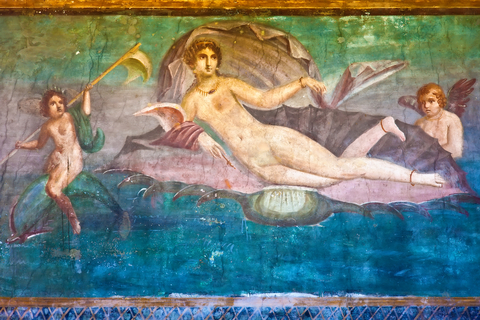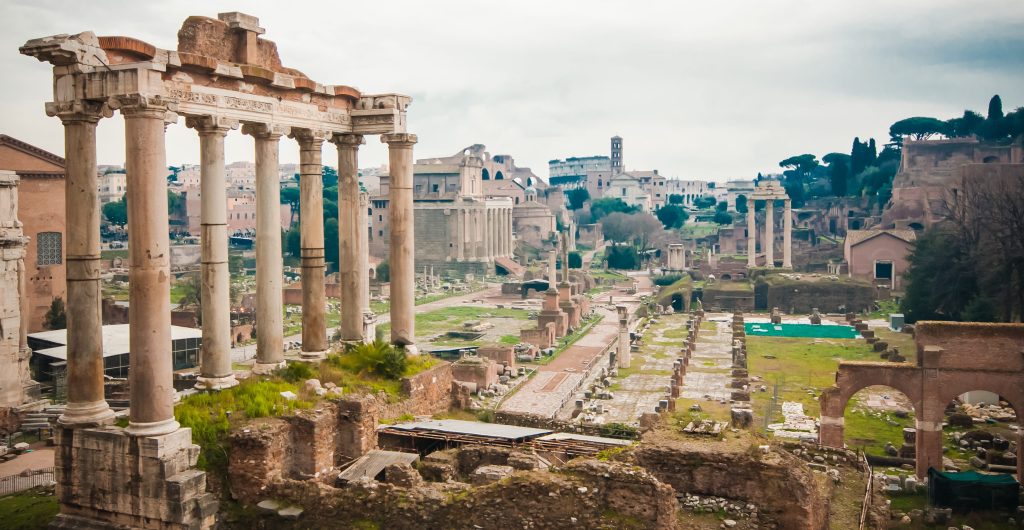Introduction
In the rich tapestry of Roman mythology, few deities captivate the imagination quite like Venus, the goddess of love, beauty, and desire, whose timeless allure continues to enchant and inspire across the ages. In this article we will cove the Roman Goddess Venus’s origin, her role as the Roman goddess of love and beauty, her symbols, the planet Venus, stories and legends, as well as her other duties.
Venus’s Origin and Birth
The Roman goddess Venus, known for her associations with love, beauty, and fertility, finds her origins deeply intertwined with the mythology of ancient Rome and Greece. Venus is the Roman counterpart to the Greek goddess Aphrodite, whose myths were adapted and reinterpreted within Roman culture. According to Roman myth, Venus’s origin was from the sea foam, a narrative inspired by the Greek story where Aphrodite emerges from the sea after Uranus’s severed genitals were cast into the ocean by his son Cronus.
Venus’s significance in Roman culture extended beyond her mythological origins. She was venerated as the ancestor of the Roman people through her son Aeneas, a Trojan hero who fled the fall of Troy and whose descendants, Romulus and Remus, founded Rome. This divine lineage provided the Romans with a sense of divine favor and legitimacy.
Roman Goddess of Love and Beauty
As the Roman goddess of love and beauty, Venus’s duties encompassed a wide range of responsibilities that influenced both the personal and communal aspects of Roman life. She was primarily seen as the divine force behind romantic love, sensuality, and the beauty that inspires desire. Venus was invoked in matters of the heart, ensuring the flourishing of romantic relationships and the physical allure that kindles passion. Her influence extended to marriages and the harmonization of relationships, making her a pivotal deity in the personal and emotional lives of Romans. The rituals and offerings made to her were often aimed at securing her favor in love affairs and ensuring physical attractiveness.
Beyond her role in romantic love, Venus also played a crucial part in public life and state affairs. As Venus Genetrix, she symbolized motherhood and familial bonds, reflecting her role in the founding myths of Rome and the propagation of its people. She was seen as a protector of gardens and vineyards, symbolizing fertility and the abundance of nature.

Her presence was invoked in times of political or social transition to ensure prosperity and harmony. Temples dedicated to Venus, such as the aforementioned Venus Genetrix and the later Venus Victrix, underscored her significance in both the private and public spheres, highlighting her role in the social and moral fabric of Roman society.
Venus’s Symbols
Venus’s symbols are rich in meaning and reflect her multifaceted nature as the goddess of love, beauty, and fertility. One of the most prominent symbols associated with Venus is the rose, which represents beauty, love, and the fleeting nature of life. The delicate yet vibrant flower captures the essence of romantic love and physical attraction, which are central to Venus’s domain. Another significant symbol is the myrtle plant, often linked with Venus due to its evergreen nature and fragrant blossoms, symbolizing eternal love and desire. Additionally, the dove, often depicted alongside her, epitomizes peace, love, and fidelity, underscoring her role in nurturing harmonious relationships.
Venus is also frequently associated with the seashell, particularly the scallop shell, which harks back to her mythological birth from the sea foam. This imagery of Venus emerging from the ocean on a shell encapsulates her origins and her connection to the natural elements of water and birth.
The apple is another symbol tied to Venus, representing desire and the choice in love, famously linked to the mythological event of the Judgement of Paris, where Venus was awarded the golden apple as the fairest of the goddesses. These symbols not only highlight her attributes but also serve as a constant reminder of her pervasive influence over both the natural world and human emotions.
Venus the Planet
The planet Venus, the second planet from the sun, is intrinsically connected to the Roman goddess Venus due to its bright and radiant appearance in the sky, which has captivated human observers for millennia. Known as both the “morning star” and the “evening star,” Venus is one of the most luminous objects in the sky, rivaled only by the moon and the sun. This striking brightness and beauty naturally led ancient astronomers to associate the planet with the goddess of love and beauty. The planet’s visibility at dawn and dusk symbolically reflects Venus’s role in heralding both the beginning and end of the day, paralleling the goddess’s influence over the cycles of love and life.
In Roman culture, the connection between the planet Venus and the goddess was more than a mere association of names. The planet’s movements and phases were closely observed and integrated into Roman mythology and astrology. Venus’s phases were believed to influence human affairs, particularly matters of love, fertility, and harmony. Astrologically, the planet Venus is still associated with attributes of beauty, attraction, and relationships, continuing the legacy of the goddess’s characteristics.

Stories and Legends
Stories and legends about the Roman goddess Venus are abundant, reflecting her significant role in Roman mythology and culture. One of the most famous tales is the myth of Venus and Mars. Despite being married to Vulcan, the god of fire and blacksmiths. Venus engaged in a passionate affair with Mars, the god of war. This affair, emblematic of the intertwining of love and conflict, was eventually discovered by Vulcan, who crafted a fine, nearly invisible net to ensnare the lovers. Upon catching them in the act, he exposed their infidelity to the other gods, who responded with laughter rather than outrage.
Another notable legend is Venus’s involvement in the Judgement of Paris, a crucial event leading to the Trojan War. According to the myth, Eris, the goddess of discord, threw a golden apple inscribed “to the fairest” among the goddesses Hera, Athena, and Venus. Paris, a Trojan prince, was chosen to determine the recipient.
Each goddess offered him a bribe: Hera promised power, Athena offered wisdom and victory in battle, and Venus tempted him with the love of the most beautiful mortal woman, Helen of Sparta. Paris awarded the apple to Venus, leading to his elopement with Helen and the onset of the Trojan War. This story highlights Venus’s persuasive power and her role in the intricate interplay of divine and mortal affairs.
Venus’s Other Duties
In addition to her primary roles associated with love and beauty, Venus had other important duties that impacted various facets of Roman life. Venus Verticordia, for example, was an aspect of the goddess responsible for turning the hearts of women toward virtue and chastity. This role underscored her influence over moral and social values, reflecting her capacity to guide personal conduct and uphold societal norms. Rituals and festivals, such as the Veneralia held on April 1st, were dedicated to Venus Verticordia, where offerings were made to seek her favor in maintaining purity and fidelity within relationships. This illustrates how Venus’s domain extended beyond romantic love to encompass broader ethical dimensions, emphasizing her integral role in the moral framework of Roman society.
Moreover, Venus was venerated as Venus Cloacina, the purifier and protector of Rome’s main sewer system, the Cloaca Maxima. This lesser-known aspect of Venus highlights her association with cleansing and sanitation, essential for the health and well-being of the city. By linking Venus with purification, the Romans acknowledged her influence over the physical and spiritual cleanliness necessary for a thriving community.

In conclusion, Venus’s roles and responsibilities were diverse, encompassing not only love and beauty but also virtue, social order, and public welfare. Her worship and mythology reveal a complex and multifaceted deity whose influence permeated all aspects of Roman life. From guiding the moral compass of individuals to ensuring the health of the city, Venus embodied the essential qualities that sustained both personal relationships and communal prosperity. Her enduring legacy in Roman culture underscores the depth of her significance and the reverence she commanded in the ancient world.
Roman Coins
Roman coins remain popular amongst collectors due to their historical significance and intricate designs. These coins offer a tangible link to the ancient world. Depictions of Venus on Roman coins provide a captivating connection to the goddess of love and beauty, adding a compelling allure to numismatic enthusiasts and collectors. Below you can check out all of the Roman silver coins we currently have in stock.
Aphrodite: Greek Goddess of Love and Beauty
Introduction In Greek mythology, Aphrodite is one of the most well-known and revered goddesses. Recognized as the goddess of love, beauty, and desire, she holds a significant place in the pantheon of ancient Greek deities. Aphrodite’s captivating charm and allure have captivated countless people throughout the ages, making her an interesting figure to explore. We…
Keep reading
Roman Silver Coins
These are all of the Non-Certified and Certified silver Roman coins we currently have for sale. If you would like to read about the history of Ancient Rome, we recommend reading our blog post: “Ancient Rome: The City Founded By Two Brothers.”



You must be logged in to post a comment.